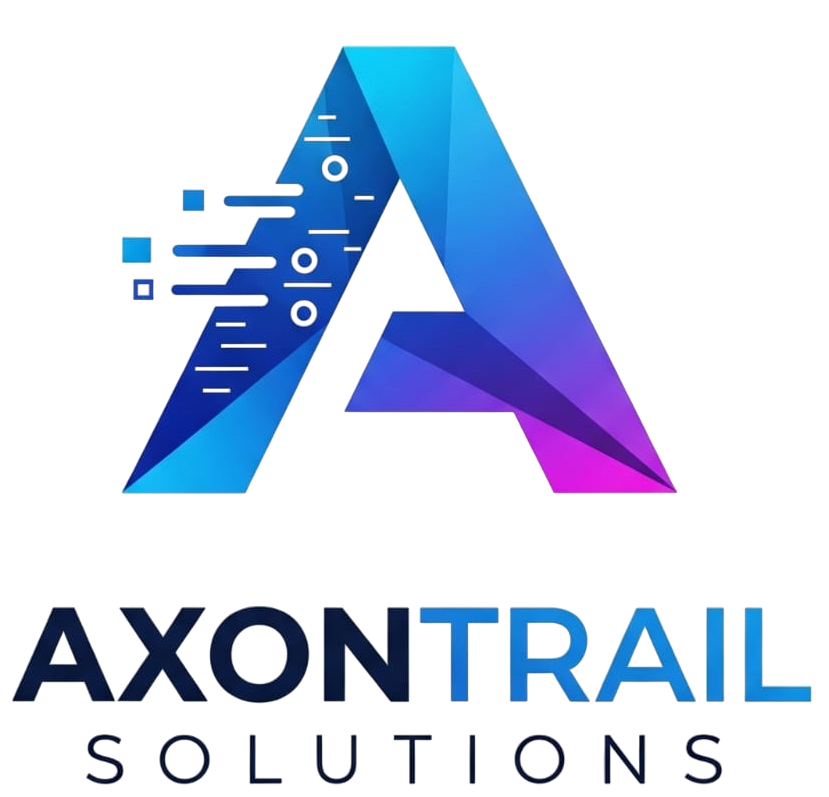
- July 17, 2025
- AxonTrail Editorial Team
- 0
Table of Contents
ToggleFreedom for Business Owners: How Digital Systems Empower Entrepreneurs
Introduction
Running a modern enterprise often feels like juggling flaming torches: between endless emails, spreadsheets and ad hoc fire drills, business leaders struggle to carve out time for innovation and strategic growth. Manual processes not only slow down decision‑making but also divert attention from high‑value activities such as nurturing client relationships and forging new partnerships. By leveraging digital platforms—from automated workflows to cloud‑native services—organisations can offload repetitive tasks and deliver true Freedom for Business Owners.
In this blog, we’ll explore how purpose‑built systems transform the day‑to‑day of leadership teams, increase operational transparency, and embed agility into your core DNA. We’ll break down the essential technologies, outline a step‑by‑step implementation framework and illustrate how to measure both immediate wins and long‑term gains. Whether you’re a seasoned entrepreneur or steering an SME towards scale‑up, it’s time to prioritise Freedom for Business Owners in every facet of your enterprise development.
Why Freedom for Business Owners Matters
In an age where speed and responsiveness dictate market success, the capacity to delegate routine functions is no longer a luxury—it’s a necessity. Establishing clear, automated workflows ensures genuine Freedom for Business Owners, allowing them to steer strategy rather than firefight details. When teams can access the right data at the right time, leaders regain the headspace needed to innovate, build culture and explore new revenue streams.
Beyond individual sanity, this liberation fosters a healthier balance between professional and personal life. Reduced manual overhead translates into fewer late‑night catch‑ups and more time to recharge. Ultimately, systems that guard against burnout not only preserve well‑being but also encourage the kind of creative thinking that propels businesses forward.
Key Digital Systems Driving Change
Workflow Automation
Repetitive tasks—such as invoice processing, approval loops and routine follow‑ups—can easily consume dozens of staff hours each week. Implementing workflow automation platforms grants Freedom for Business Owners a chance to reclaim hours spent on repetitive tasks each week. Tools like Zapier, Microsoft Power Automate or custom low‑code engines can bridge disparate applications, triggering actions automatically and escalating exceptions only when human intervention is truly needed. The result is a lean operation where teams focus on exception handling and innovation rather than rule‑bound chores.
Cloud‑Based Collaboration Tools
Geographical boundaries no longer constrain high‑performance teams. Centralised platforms like cloud‑based CRMs (e.g., AxonTrail Solutions) and project management suites (e.g., AxonTrail Solutions) bolster Freedom for Business Owners by keeping teams aligned regardless of location. Shared document repositories, integrated chat and video capabilities, and real‑time notifications ensure that every stakeholder has the most current information at their fingertips. This unified approach eliminates siloed data, accelerates issue resolution and elevates accountability across the board.
Data Analytics and Insights
Without data, strategy is guesswork. Real‑time dashboards and predictive analytics empower Freedom for Business Owners to make informed choices rooted in concrete data rather than intuition. By consolidating sales trends, customer behaviour and supply‑chain metrics into intuitive visualisations, analytics platforms reveal hidden bottlenecks and emergent opportunities. Advanced tools even use machine learning models to forecast demand, optimise pricing and flag anomalies—keeping you steps ahead of market shifts.
Scalable Infrastructure
Yesterday’s monolithic systems can buckle under the weight of growth. Designing a scalable IT framework lays the foundation for sustainable Freedom for Business Owners, as new projects or market shifts can be absorbed without friction. Cloud providers such as AWS, Azure and Google Cloud offer elastic compute, managed databases and container orchestration services that automatically adjust capacity to meet demand. This pay‑as‑you‑go model minimises upfront capital expenditure and ensures performance remains consistent, even during peak loads.

Implementing Digital Systems the Right Way
Rolling out new technology is as much about people and processes as it is about software. Follow this proven roadmap to maximise adoption and ROI:
Assess needs and map processes
Begin by mapping existing workflows and pain points to ensure Freedom for Business Owners remains at the centre of your technology roadmap. Conduct stakeholder interviews, gather usage statistics and identify manual handovers that cause delays or errors.Choose and integrate the right tools
Select solutions with open APIs and pre‑built connectors so Freedom for Business Owners can focus on value‑add activities from day one. Prioritise platforms that support low‑code customisation and seamless interoperability with your finance and CRM systems.Train and empower teams
Invest in comprehensive onboarding programmes and hands‑on workshops. Equipping employees with tailored playbooks and quick‑reference guides reduces resistance and accelerates proficiency.Monitor performance and refine continuously
Establish KPIs—such as process cycle time, error rate reduction and user satisfaction scores—to track impact. Schedule quarterly reviews to recalibrate automations, retire redundant processes and scale successful modules to other departments.
Future‑Proofing Your Enterprise
Technology evolves rapidly, and what’s cutting‑edge today can become legacy tomorrow. By embracing modular platforms and open APIs, you position Freedom for Business Owners at the heart of innovation, ready to plug in emerging technologies—like AI‑driven customer support or IoT‑enabled inventory tracking—as they arise. Cultivate a vendor‑agnostic architecture that balances best‑in‑class components with cohesive governance, ensuring that your system remains adaptable without compromising security or compliance.
Conclusion
Ultimately, Freedom for Business Owners is no longer a distant goal but an attainable reality when digital systems are deployed thoughtfully across every level of an organisation.
By following the principles outlined—understanding operational needs, choosing adaptable tools, fostering a culture of continuous improvement and maintaining a modular architecture—you can fully embrace Freedom for Business Owners and transform your daily operations from reactive to proactive.
Your journey to Freedom for Business Owners begins today. Reach out to AxonTrail Solutions to discover how our tailored digital platforms can liberate you from mundane tasks and unlock your strategic potential.
Frequently Asked Questions
1. What level of technical expertise is required to adopt these systems?
Most modern platforms are designed for non‑developers, with intuitive drag‑and‑drop interfaces and extensive online documentation. Basic IT support and a willingness to learn are usually sufficient.
2. How long does digital transformation typically take?
While small pilot projects can roll out in as little as 4–6 weeks, full‑scale implementation across multiple departments often spans 6–12 months, depending on complexity and change‑management processes.
3. What kind of ROI can I expect?
Organisations often see a 20–30% reduction in manual effort and a 10–15% improvement in process cycle times within the first year, translating into substantial cost savings and revenue uplift.
4. How do you ensure data security during cloud migration?
We follow best practices such as data encryption at rest and in transit, role‑based access controls, multi‑factor authentication and regular security audits to safeguard sensitive information.
5. Can these systems integrate with legacy applications?
Yes. Many solutions offer pre‑built connectors or middleware that facilitate secure bi‑directional data flows between new platforms and on‑premises systems.
6. What if my team resists the change?
A robust change‑management plan—including leadership endorsement, continuous training and clear communication of benefits—helps overcome resistance and fosters long‑term engagement.
7. How do you measure the success of digitalisation?
Key metrics include process throughput, error rates, employee adoption rates and customer satisfaction scores. Dashboards can track these KPIs in real time.
8. Is it possible to scale these systems internationally?
Absolutely. Cloud‑native tools are inherently global, supporting multi‑currency, multi‑language capabilities and compliance with regional data‑protection regulations.
9. What ongoing support is required post‑implementation?
Continuous monitoring, periodic health checks and user feedback loops are essential. Service‑level agreements (SLAs) can be customised to meet your support requirements.
10. How does AxonTrail Solutions differentiate from other vendors?
Our strength lies in bespoke configurations, deep industry expertise across retail, manufacturing and services, and a partnership‑driven approach that aligns technology with your unique business objectives.
